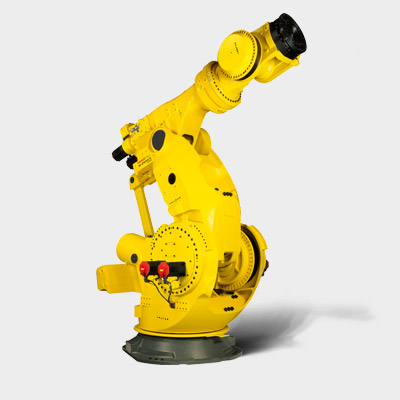Global Robot Sales Will More Than Double in Seven Years

Study forecasts market value topping $45 billion in 2030
An integral feature of Industry 4.0—or digital manufacturing—is automation, which affects multiple activities within work cells, whether on machines in the form of sensors and other controls, or by machines, as with auxiliary devices like robots.
As industries and their suppliers add capabilities in the smart manufacturing systems that digitalization makes possible, the annual global market value growth of robot sales will approach double-digit figures from 2023 to 2030. Zion Market Research (ZMR) forecasts that the global market for industrial robots will grow to $45.17 billion in 2030 from $21.45 billion in 2022—a compound annual growth rate of approximately 9.74 percent from in the forecast period.
The surging demand will affect virtually all categories of robots, ZMR writes in its latest study “Industrial Robotics Market Size and Share.” This includes SCARA (selective compliance assembly robot arm) units, cartesian robots, collaborative robots (“cobots”), cylindrical robots and articulated robots.
Many Benefits Will Propel Robot Sales
Among predictable factors that will drive robot demand are rising labor costs, labor shortages and the ability of robots to complete repetitive operations faster and with greater accuracy than humans.
Robots can also be reprogrammed to work effectively with upgraded automation systems. And the study notes that advanced software and communication networks will boost sales. “The inclusion of artificial intelligence (AI) and machine learning systems in industrial robots will lucratively impact the expansion of the global market. The launching of 5G systems will proliferate the application of robotics in … manufacturing … and … open new vistas of growth for the global market.”
Product and technology developments within industries will increase sales as well. The rise of automation in the electrical and electronics sector will create growth opportunities, the study reports. The sector will, in fact, lead the surge in robot sales during the forecast period. The utilization of industrial robots in this market will contribute to increased output and reduced expenses, as well as minimization of production overhead costs, the study adds.
In applications, the processing segment is slated to register the fastest CAGR over the analysis period. The processing sector, which includes plastics, accounted for approximately 55 percent of total market share in 2022.
New Companies Boost Supply and Sales
Other notable growth trends the study cites include more supply sources for robots, some of which, like Mitsubishi Electric Corp., are new to the business. Mitsubishi plans to debut initial models this year, which are designed for industrial tasks in the food-processing units.
Another trend is governments promoting the use of robots in their countries’ industries. In the second half of 2020, for example, the Prince of Dubai introduced The Dubai Robotics & Automation project in which nearly 2,000,000 robots were to be provided to various logistics and industrial sectors to increase their production.
The Asia-Pacific region accounted for 49 percent of the global industrial robotics market share in 2022 and will remain a leading region during the forecast period, ZMR states. The expansion of the market in Asia-Pacific will be due to the large number of factories in countries such as Taiwan, South Korea, Japan and China, and to the growing adoption of automation and AI in industrial sectors.
In a coming post, we’ll look at another study that projects robot sales in the rapidly changing automotive industry.
